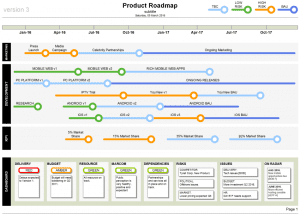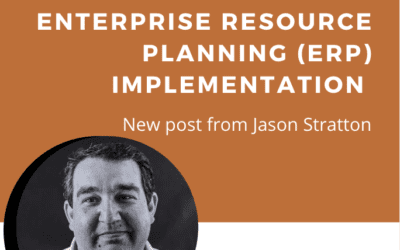New technologies and new competitors are changing markets faster than ever before. Whether your company is in a B2B or B2C environment, it is critical that you have a product strategy, high level product roadmap and product management tools to ensure a relevant, sustainable, and profitable business.
Your product strategy will communicate the vision and objectives for your products to the market and to the business. The product roadmap will guide your organization through decisions for product profitability, optimizations, divestitures, and new product launches. With a strategy and the roadmap, the organization can ensure products are managed for maximum profitability and the company is actively working towards the marketplace of the future.
Building Your Product Strategy
Your product strategy should be clear, concise, achievable, and support your overall business model. Building your product strategy is as much about what you will do, as it is about defining what and who your products won’t service.
The strategy will include the vision and objectives for the product in terms of:
- market opportunity
- customer segmentation
- differentiation
- positioning
- competitive advantage
- distribution
- pricing
The organization should also create measurable objectives in the strategy for product performance such as margins and market share expectations.
Creating the Roadmap
With your product vision in place, you can start building out your roadmap for how your organization will realize your strategy. In many cases, the exercise of building out the roadmap will help confirm and test your strategy. For most organizations the roadmap should be kept high level and spanning at least a year out and up to five years, depending on the life cycle span of the organization’s products. The roadmap is the organization’s visual tool to communicate implementation of your products.
 When creating the roadmap, the team may include new product launches, feature updates to existing products, product divestitures, new geographic product expansions, etc. The company should discuss how often the roadmap is updated (i.e. quarterly or semiannually) and what, if any, key performance indicators will be shown on the roadmap.
When creating the roadmap, the team may include new product launches, feature updates to existing products, product divestitures, new geographic product expansions, etc. The company should discuss how often the roadmap is updated (i.e. quarterly or semiannually) and what, if any, key performance indicators will be shown on the roadmap.
Here is an example roadmap from Business Documents UK.
Managing the Products
It is also critical that businesses are managing their existing products in a systematic way to deliver the highest margins possible. By having the product strategy and a roadmap in place, product managers have key guidelines for executing decisions regarding product performance, product life cycle and taking immediate actions for bottom line and top line improvements to the business. This includes actions such as pricing increases, fire sales, new product introductions, product optimizations due to customer feedback.
Create a System to Analyze your Product Portfolio’s Health:
1 – Define what metrics are important for your products. Suggestions are:
- Gross Margin
- Number of customers purchasing the product
- Warranty rate
- Inventory turns (if you are not a make-to-order)
- Repeat customer purchases
2 – Define target values for each metric
3 – Create a dashboard or visual matrix that helps you analyze your products.
4 – Define how often you will analyze your products and add it to your business review process.
Strategize, Map, Implement, Manage = Profits
How do you plan to bring that product to the marketplace 5 years from now? Will the product still be relevant? By having a product strategy, a roadmap, product management tools and actively scanning marketplace will keep your company aligned and responsive to ensure you are managing for maximum profitability and building for the marketplace of the future.



